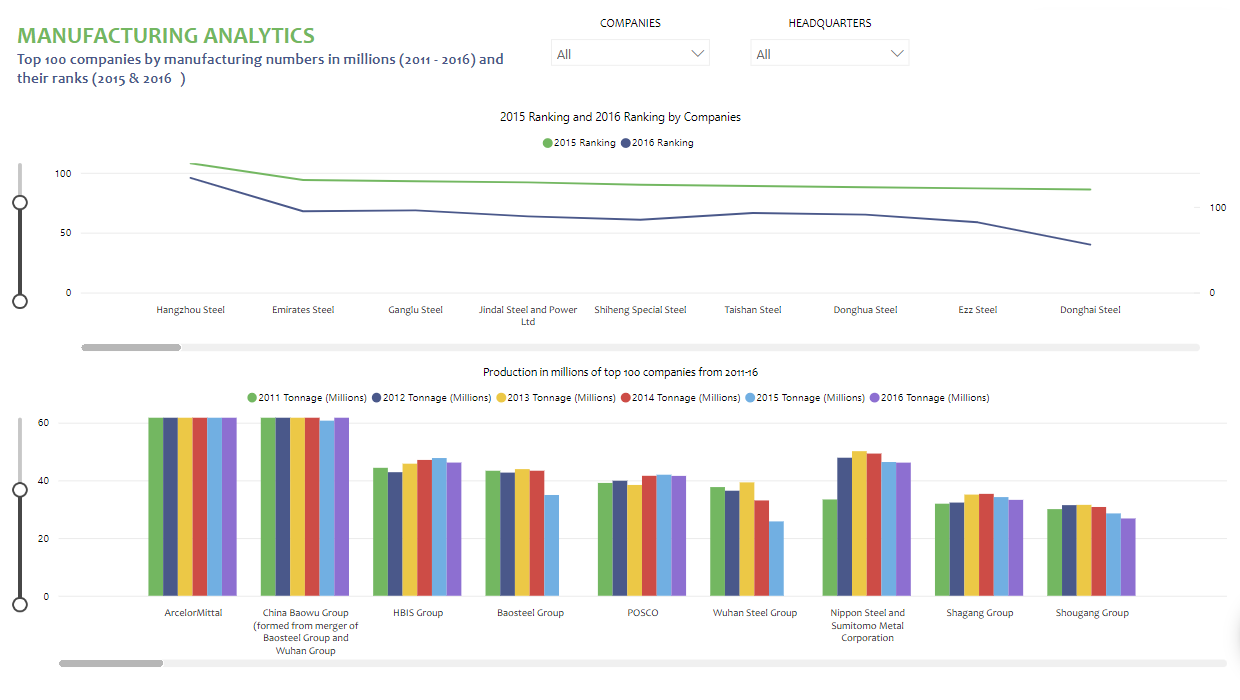Style Sampler
Layout Style
Search News Posts
General Inquiries 1-888-555-5555
•
Support 1-888-555-5555
Waste Management
The emergence of Industry 4.0, characterized by the integration of advanced technologies such as Internet of Things (IoT), artificial intelligence (AI), and big data analytics, has transformed the landscape of modern manufacturing. However, with the increased efficiency and productivity in the production processes, there is also a growing concern about the environmental impact, particularly in terms of waste generation and management. This case study delves into the application of data analytics in waste management within the context of Industry 4.0, with a focus on sustainability and sustainable solutions.
The provided sample datas are composition of waste, recycling and resource recovery, and real-time monitoring. The waste generation data includes details such as date and time, type of waste, volume/weight, and location.
The composition of waste data provides information on the types of materials and their percentage composition, as well as the presence of hazardous materials. The recycling and resource recovery data includes details on the amount of materials recycled and recovered, as well as the recycling rate.
Finally, the real-time monitoring data includes alerts/notifications and response time for abnormal waste generation events. Overall, this data provides insights into waste management practices in the context of Industry 4.0 with the use of data analytics for real-time monitoring and decision making.
Below you can see four different charts for four different data sources: a chart for waste generation data, a chart for waste composition data, a chart for recycling and resource recovery data, and a chart for real-time monitoring data.
| Date and Time | Type of Waste | Volume/Weight (kg) | Location |
|---|---|---|---|
| 2023-04-01 09:30:00 | Electronic Waste | 15.2 | Assembly Line 1 |
| 2023-04-02 14:45:00 | Hazardous Materials | 5.8 | Testing Area 2 |
| 2023-04-03 11:15:00 | General Waste | 42.3 | Assembly Line 3 |
| Types of Materials | Percentage Composition | Hazardous Materials |
|---|---|---|
| Plastics | 35% | No |
| Metals | 25% | No |
| Chemicals | 15% | Yes |
| Type of Materials | Amount Recycled (kg) | Amount Recovered (kg) | Recycling Rate (%) |
|---|---|---|---|
| Metals | 150 | 80 | 53.3% |
| Plastics | 200 | 100 | 50% |
| Real-time Data | Alerts/Notifications | Response Time (minutes) |
|---|---|---|
| 2023-04-04 16:20:00: 10 kg of hazardous waste generated | Alert: Abnormal hazardous waste generation | 5 |
| 2023-04-05 08:00:00: 0 kg of general waste generated | Alert: Abnormal general waste generation | 3 |
A manufacturing facility in a developing country was facing significant challenges in waste management. The facility, which produced electronic goods, was generating a large volume of waste, including electronic waste, hazardous materials, and general waste, resulting in increased operational costs, regulatory compliance issues, and environmental concerns. The facility was struggling to identify and implement effective waste management strategies that would align with their sustainability goals and comply with the relevant regulations.
In order to address these challenges, the facility decided to leverage the power of data analytics within the framework of Industry 4.0 to implement a sustainable waste management strategy. The facility implemented an IoT-enabled waste management system that collected data from various sources, such as sensors, machines, and production processes, and integrated it into a centralized data analytics platform.
The data collection process involved the installation of sensors at different points in the production process to capture real-time data on waste generation, composition, and disposal. The data was collected and stored in a cloud-based platform, where it was analyzed using advanced analytics techniques, including machine learning algorithms and statistical analysis.
The data analytics platform provided valuable insights into the waste generation patterns and trends, as well as the composition of waste. The facility was able to identify the major sources of waste and their impact on the environment. The data also revealed that a significant amount of waste was being generated during the testing and assembly processes, indicating a need for process optimization and waste reduction measures. Additionally, the facility was able to identify opportunities for recycling and resource recovery, which could contribute to their sustainability goals.
Based on the insights obtained from the data analytics, the facility implemented several recommendations for improving waste management:
Process optimization: The facility optimized the testing and assembly processes to reduce waste generation by implementing lean manufacturing principles, improving product quality, and reducing rework.
Recycling and resource recovery: The facility implemented a comprehensive recycling program for electronic waste, including components and materials that could be reused in the production process. They also explored partnerships with local recycling facilities to ensure proper disposal of hazardous materials.
Real-time monitoring: The facility deployed real-time monitoring of waste generation using IoT sensors, which allowed them to detect and address waste-related issues promptly. This helped in reducing waste generation and improving waste management practices.
Employee engagement: The facility engaged employees in waste management practices through training programs and awareness campaigns to promote a culture of sustainability and responsible waste management.
Results for the facility includes:
Reduced waste generation: The facility was able to reduce waste generation by 30% within the first year of implementation, resulting in cost savings associated with waste disposal and regulatory compliance.
Improved recycling and resource recovery: The facility achieved a recycling rate of 60% for electronic waste, resulting in reduced environmental impact and conservation of resources.
Enhanced operational efficiency: The process optimization measures implemented based on data analytics insights resulted in improved operational efficiency and reduced production costs.
Compliance with regulations: The facility was able to comply with the relevant regulations related to waste management, avoiding penalties
